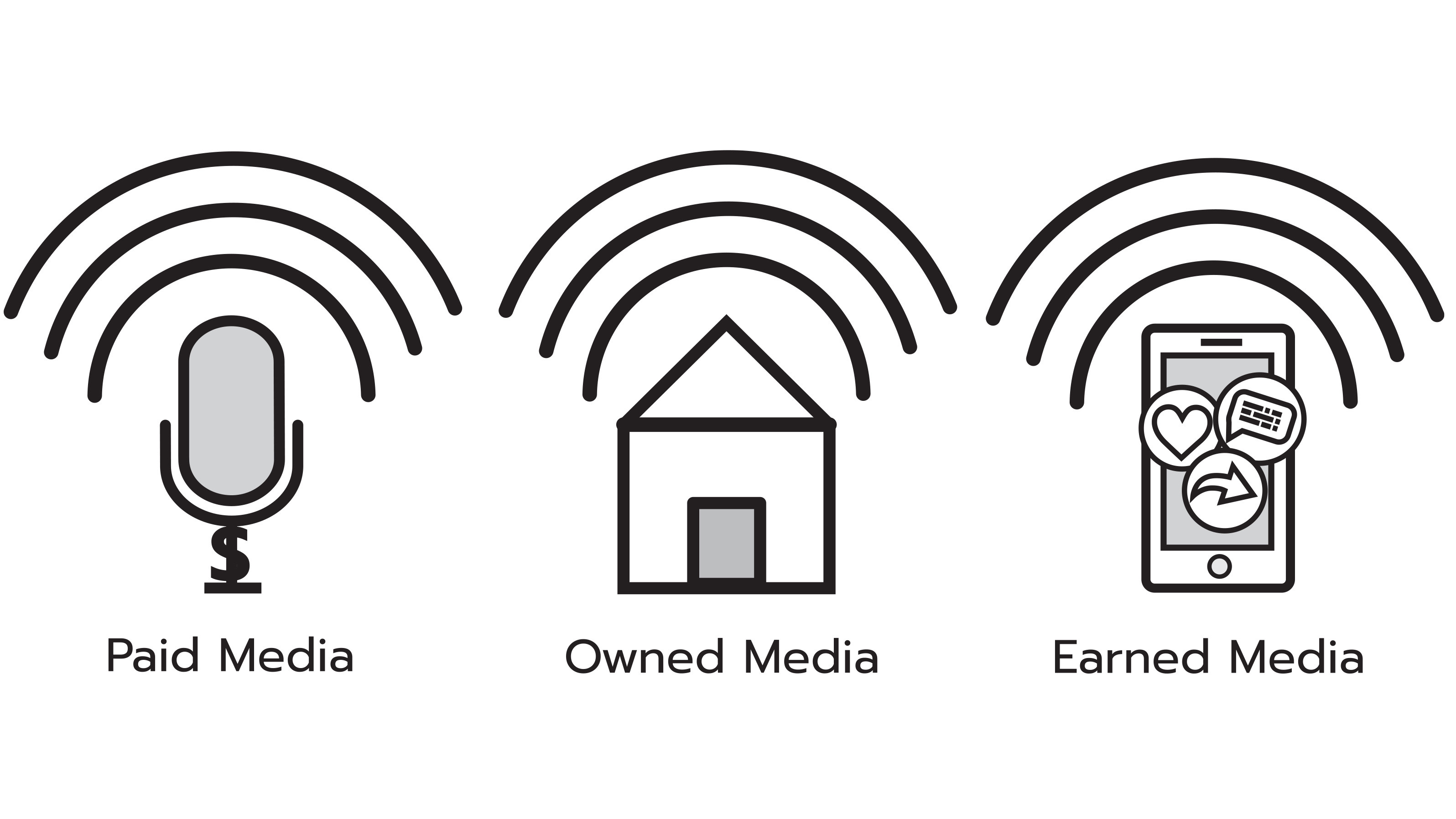1 min read
Why You Should Invest in Smarketing
"Smarketing is the process of integrating the sales and marketing processes of a business. The objective is for the sales and marketing functions to...

In content marketing, there are three primary channels through which you can promote it. Earned media, owned media, and paid media. We’re going to focus on the last one in this post, but let’s quickly explain the differences between them.
Earned media is secured by your PR team or just through word of mouth when a reporter publishes a story that includes you in it. Owned media refers to content on channels that you control, such as your company website and its social media channels. Paid media, our topic for today, includes any channels you pay to publish your content.
Certainly, some companies market themselves effectively with just owned media, perhaps with the addition of earned media. But for content marketing to reach its full potential, it’s best to use all three in concert, because, even if your content is compelling and fully optimized for search engine optimization (SEO), there’s a limit to how rapidly you can expand your reach organically. Paid media enables you to exceed the natural limits of organic growth to reach a larger audience much faster.
First, determine who you want to reach. The more you know about your customers and the more detailed your personas, the better you’ll be able to determine which paid channels they frequent so you can design your strategy accordingly.
Next, decide which assets you want to promote. If you’re doing a paid campaign, you’re most likely trying to reach prospects who have not previously engaged with you and may not even be aware of your company at all. So, especially if you’re just getting started with paid media, choose assets that have performed well organically in the past. Once you gain some experience working with paid media, you can experiment with new assets, but in the beginning, it’s best to start with content that you already know appeals to your potential buyers.
Don’t be afraid to promote gated content. It’s a trade-off, of course. Requiring people to click through your paid content to a landing page and then enter a few lines of contact information will turn some off. However, you end up capturing contact information for those who are interested enough in what you have to offer to jump through those hoops — that’s not a bad trade-off.
Finally, make sure you have a plan for testing and measurement. To get the biggest bang for your buck, you need to track performance and learn what works best so you can repeat it, getting better results over time. And don’t forget A/B testing! Regularly try different tactics with copy to promote the same asset and compare results. These ongoing experiments will make a big difference in the effectiveness of your campaigns over time. If you’re new to this, you should allocate budget specifically for pressure testing a few tactics and outlets to see if one performs better than another.
While there are many different channels to distribute your content, here we’ll focus on the most popular, and, unsurprisingly, they are primarily social media channels. As a result, all of your paid content campaigns on social media should also work to increase your follower count, which will make your owned media efforts more effective.
LinkedIn: For enterprise technology companies, LinkedIn is a great place to start; after all, it’s a social network built for the business world. You can target people granularly according to role, industry, geography and many other factors. Content can appear in users’ feeds or in Sponsored InMail, which appears as a message when they log in, so they’ll see it immediately.
Twitter: Love it or hate it, Twitter is a vital channel for reaching enterprise buyers and especially the technical personnel — from admins to CIOs — who will play a role in the buying cycle. Adhere to good social media practice: include a social share card, make sure the link is at the end of the text portion of the post and definitely engage in A/B testing. And, again, if you’re new to Twitter, first promote tweets that have already performed well for you organically.
Facebook: Facebook is the largest global social network, so, while it can’t be completely ignored, it’s better suited for consumer marketing campaigns rather than B2B. That said, Facebook, too, enables advertisers to precisely serve up ads to very specific demographics. So, if you have a key purchasing audience that interacts a lot with Facebook, it’s worth experimenting with the company’s many options: targeted ads that show up in their news feeds, carousel ads that show a series of images, right column ads, Facebook marketplace and much more.
YouTube: Youtube is a strong platform for paid content, especially video content. But there’s much more to YouTube than video. Certainly, there’s a wide array of video ad possibilities, from skippable ads of various lengths to unskippable ads. You can get even more out of YouTube when you pair your paid campaign with a YouTube influencer engagement.
Trade publications: There are plenty of publishers who provide paid content opportunities to their audiences, such as TechTarget and IDG for enterprise IT audiences. These programs have the advantage of knowing their audience well, can manage much of the back-end work and they will often guarantee a specific number of leads. They are, however, typically much more expensive than the social media channels. Before engaging with a publication, ask for references, be clear about the KPIs your media partner must reach, and make sure they can truly reach the audience you need. And press on them to offer you a starter or beginner program before you go all in on a large campaign investment.
Paid media is a critical piece of any company’s marketing mix, and it’s often absolutely vital to achieve top-of-funnel growth in leads, followers and other KPIs that marketing professionals are expected to hit. So long as you know your customer, understand the buying cycle and prepare a well-researched strategy that incorporates ongoing measurement and testing, those daunting growth targets will be achievable.
For help with your paid media program, please reach out to us. We’d love to help!

1 min read
"Smarketing is the process of integrating the sales and marketing processes of a business. The objective is for the sales and marketing functions to...

Your technology startup is at a crucial phase in its life. It’s raised a significant amount of venture capital funding over one or two rounds, and...

In sales and marketing, artificial intelligence (AI) adoption is a hot issue right now, and for good reason. Sales and marketing is the business...